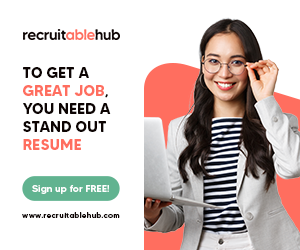You would have to be living under a rock to think that age discrimination wasn’t a problem during the recruitment process. Most employers and hiring managers know that it is illegal to discriminate based on age alone, but even if an employer doesn’t state that a candidate was too old or too young for a role, it is fair to say that age is a significant barrier to a lot of talented people finding work they love. Plenty of older and younger people who are qualified, eager, open-minded, and experienced don’t get a look in when it comes to paid work, which can be extremely detrimental to self-esteem, mental health, and financial security, especially when the market is tight.
There are statistics from all around the world that state that ageism is a serious issue. In 2020, LinkedIn surveyed 1025 Australians and revealed that 44% of all candidates between the ages of 55 and 70 believe that their age is the main reason employers were rejecting their job applications before they got to the interview stage. In 2019, a study in the United States found that 58% of workers notice age bias when they enter their 50’s, and 95% of those people claim to experience it regularly, with 12% of all over 55’s believing they weren’t considered for a promotion because of their date of birth.
On the flip side, we have so many young people trying to enter the workforce who are competing with those who have 10 to 20 years of experience already under their belts. According to the Centre for Economic Performance, young workers were twice as likely to have lost their jobs in the UK due to COVID-19 compared to older employees, and that there is a real concern that there are too many young people now moving onto trajectories heading to long-term unemployment.
There are several reasons that employers might be agist when hiring that we do need to acknowledge. For example, if you have the choice between a 30-year-old employee who might stick around for 20 years or a 55-year-old who might hang around for 5, they might prefer the younger worker. Or if a business is already in distress and doesn’t have the resources to develop a less experienced candidate, it makes sense for them to employ someone who can just hit the ground running.
In any case, there are plenty of things you can do to ensure your age isn’t the reason you aren’t getting any callbacks by age-proofing your resume.
Here are our top tips:
1. Don’t include your birthdate
Employers only require this information once you have the job. Until then, it is no one’s business which decade you entered the world.
2. Use the reverse-chronological format for your professional experience
Starting with your most recent role and working backwards helps recruiters and hiring managers to build a story of how you built your current skill set. The focus on your most recent position removes all reference to age and ensures the emphasis is on your responsibilities and achievements.
3. Only include 10 years of relevant work history on your resume
If you have been told that you are too experienced for this role, it could be because your resume has too much information in it. We recommend not going back more than 10 years as a general rule unless your experience is 100% relevant to the role you are applying for and might help you get across the line. Even if you have worked for the same company for 20 years, you only need to include your most recent positions. It is very common these days to omit your earliest work experience. No one is interested in the fact you were an Avon lady at the age of 15.
4. Highlight your internships, freelance work, and community involvement
If you don’t have 5 to 10 years of experience to include in your resume, you can definitely add in your summer jobs, temporary placements, internships, freelance, and voluntary contributions. If you had a job description and someone to report to, it is worth mentioning. I recently helped my neighbour who is in Year 11 update his resume. He hadn’t included his experience as a Private Music Teacher, which I knew first hand he currently does as he teaches my son the drums every Saturday morning. Even though he doesn’t earn much from it, and it is only half an hour a week, it is worth acknowledging that he is an excellent teacher and has instilled in my son a genuine love of music (and very loud things).
5. Update your skills
Your list of professional, personal, and particularly technical skills can be a dead giveaway when it comes to your age. While reviewing a resume recently, I was astounded to discover ‘reading’ under the skills section. Feel free to pop this in your interests, but it is an assumed skill in most workplaces and does not need to be included. I have also come across ‘Tik-Tok’ listed in the skill section, which placed the candidate firmly in the younger age brackets and a clear candidate for age bias.
6. Only highlight current and relevant qualifications and accreditations
There is nothing that screams ‘I might struggle with modern-day technology’ like including the details of the touch-typing course you completed in 1982. Alternatively, if you are trying to fluff out your education and qualifications section by including the 2 hour ‘Essential Oils’ workshop you did in your last school holidays, you are doing yourself a massive disservice. Ensure the courses, certificates, workshops attended, qualifications and accreditations are all relevant to the role you are applying for, and the modern corporate environment.
7. Include measurable results and achievements
Employers are looking to find people who will be results-oriented and outcome-focused, and there is no better way to prove that you are than by adding in some bullet points listing your achievements for the roles you have performed. If you can include some positive feedback from clients, KPI’s that you achieved, or any measurable result (think of anything that has a $, %, or #), potential employers will see that you were successful and made a positive impact.
Finally, make sure you are using professional and modern templates that are easy to read and present your experience and skills in an impressive manner. Just using a Microsoft Word document isn’t impressive enough in today’s market to make you stand out. And unless you are going for a super-creative role, you also don’t need to go over the top with fancy graphs, pictures and infographics.
Just simple, sophisticated and sleek templates that are truly timeless.
If you are stuck with exactly what information to include and which template to use, check out our RecruitableHub Resume Writer. We have created a fool-proof platform for you to include everything you need in a stylish template, while making you look amazing and giving you the best chance of landing an interview regardless of your age.
Check it out here.






 Sign in with Google
Sign in with Google
 Sign in with LinkedIn
Sign in with LinkedIn